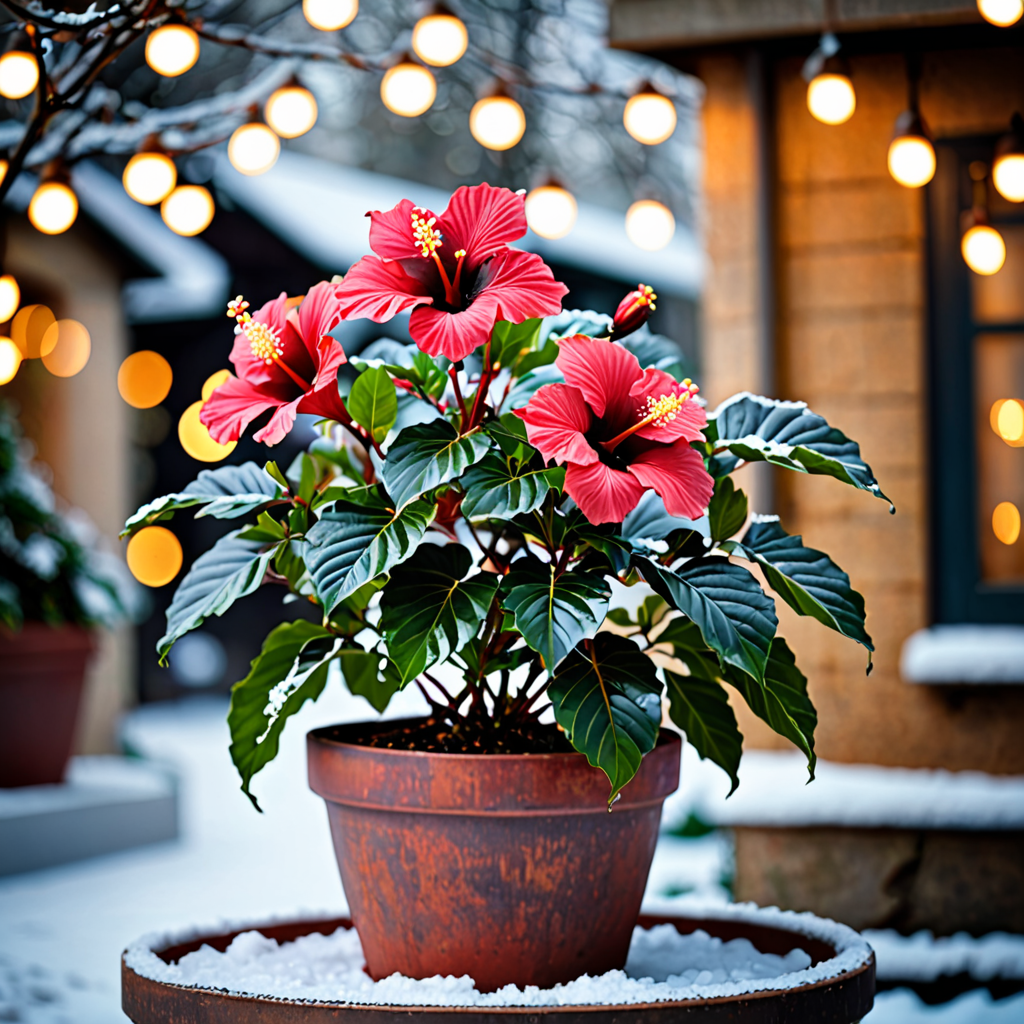How to Care for Your Potted Hibiscus During the Winter Months
Understanding Hibiscus Plants
Hibiscus plants are known for their vibrant, trumpet-shaped flowers and glossy green leaves. They are popular as potted plants, especially in temperate regions, where they can be moved indoors during the winter.
Preparing for Winter
As winter approaches, it’s important to prepare your potted hibiscus for the colder months. Begin by inspecting the plant for any pests, diseases, or nutrient deficiencies. Addressing these issues beforehand can improve the plant’s chances of surviving the winter.
Indoor Placement
When bringing your hibiscus indoors for the winter, choose a bright location with ample sunlight. Ideally, the temperature should be between 60-65 degrees Fahrenheit, and the plant should be protected from drafts. Consider placing the hibiscus near a south-facing window to provide adequate light.
Watering and Humidity
During the winter, hibiscus plants require less frequent watering. Allow the soil to dry out slightly between watering sessions. Additionally, indoor heating can reduce humidity levels, so consider using a humidifier or placing a tray of water and pebbles near the plant to increase moisture in the air.
Pruning and Maintenance
Trimming back your hibiscus plant before bringing it indoors can help reduce stress on the plant and promote healthy growth. Remove any dead or damaged branches and prune the plant to maintain its shape. Regularly inspect the plant for pests and diseases, and address any issues promptly.
Fertilization
While hibiscus plants enter a period of dormancy during the winter, they still benefit from occasional fertilization. Use a balanced, water-soluble fertilizer with equal N-P-K ratios to provide essential nutrients to the plant. However, reduce the frequency of fertilization compared to the growing season.
Preparing for Spring
As the winter season comes to an end, gradually acclimate your hibiscus plant to outdoor conditions. Once the risk of frost has passed, you can safely move the plant back outside. Begin regular watering and fertilization to encourage new growth and vibrant blooms.
FAQ
Q: Can I prune my hibiscus in the winter?
A: It’s best to prune your hibiscus before bringing it indoors for the winter to promote healthy growth. However, minimal pruning can be done during the winter if necessary, such as removing any dead or diseased branches.
Q: Should I continue fertilizing my hibiscus in the winter?
A: While hibiscus plants benefit from occasional fertilization during the winter, it’s important to reduce the frequency compared to the growing season. Use a balanced, water-soluble fertilizer with equal N-P-K ratios to provide essential nutrients to the plant.
Q: How much light does my hibiscus need indoors during the winter?
A: Provide your hibiscus with bright, indirect light during the winter months. Placing the plant near a south-facing window can help ensure it receives ample sunlight. Keeping the temperature between 60-65 degrees Fahrenheit is also crucial for its well-being.



